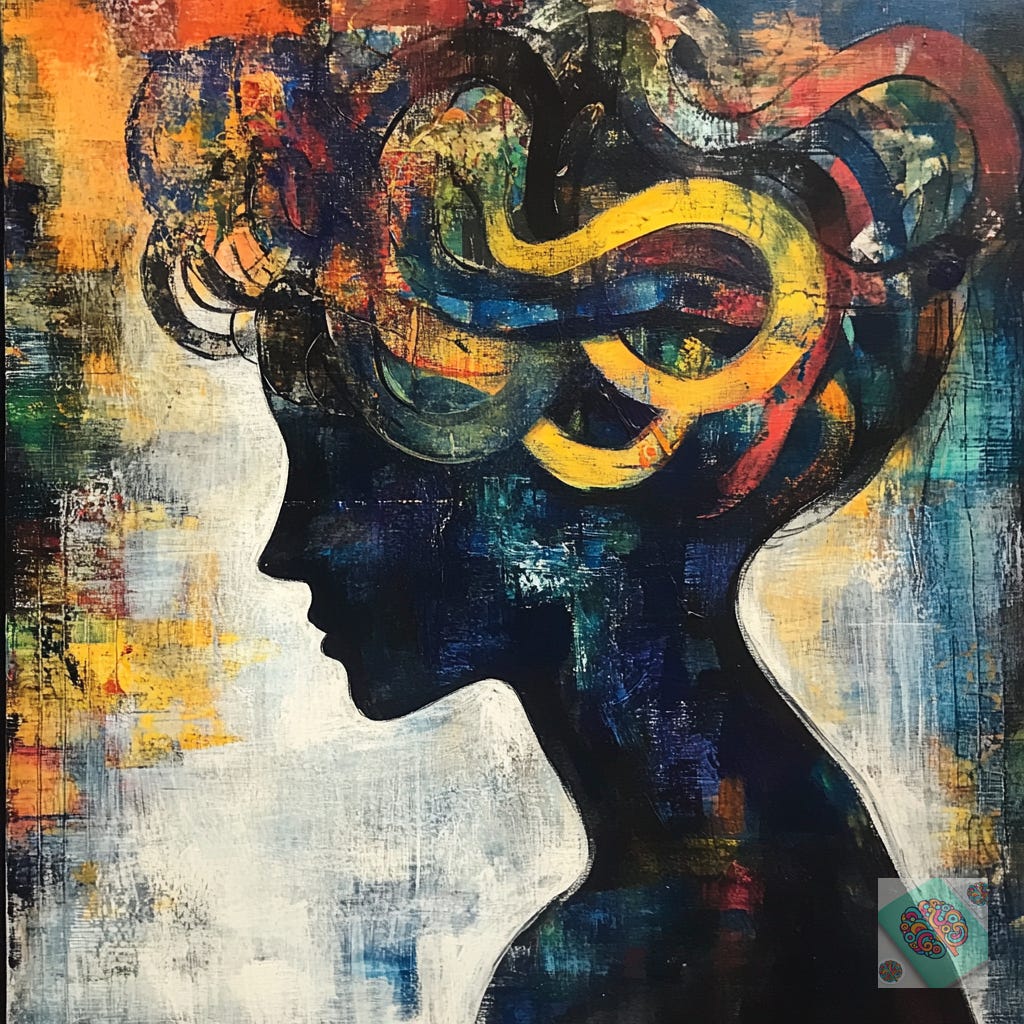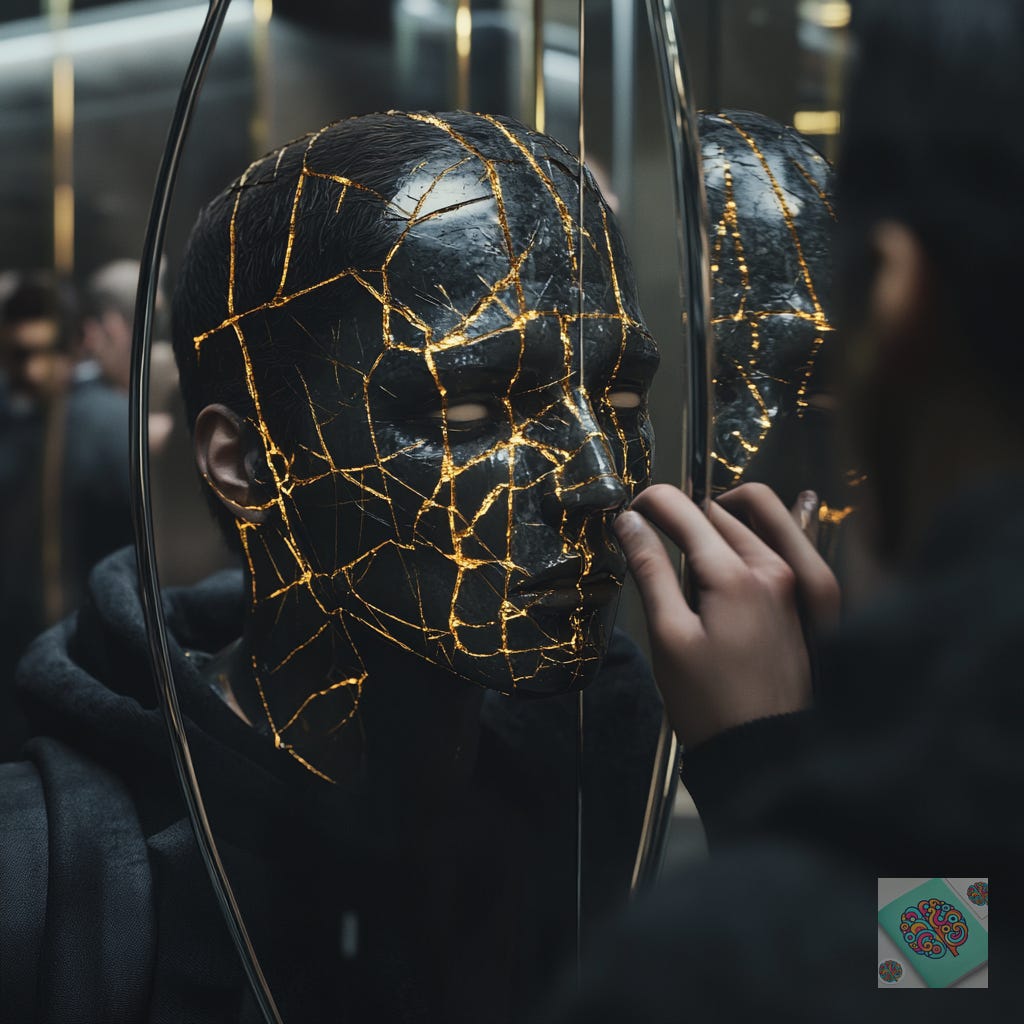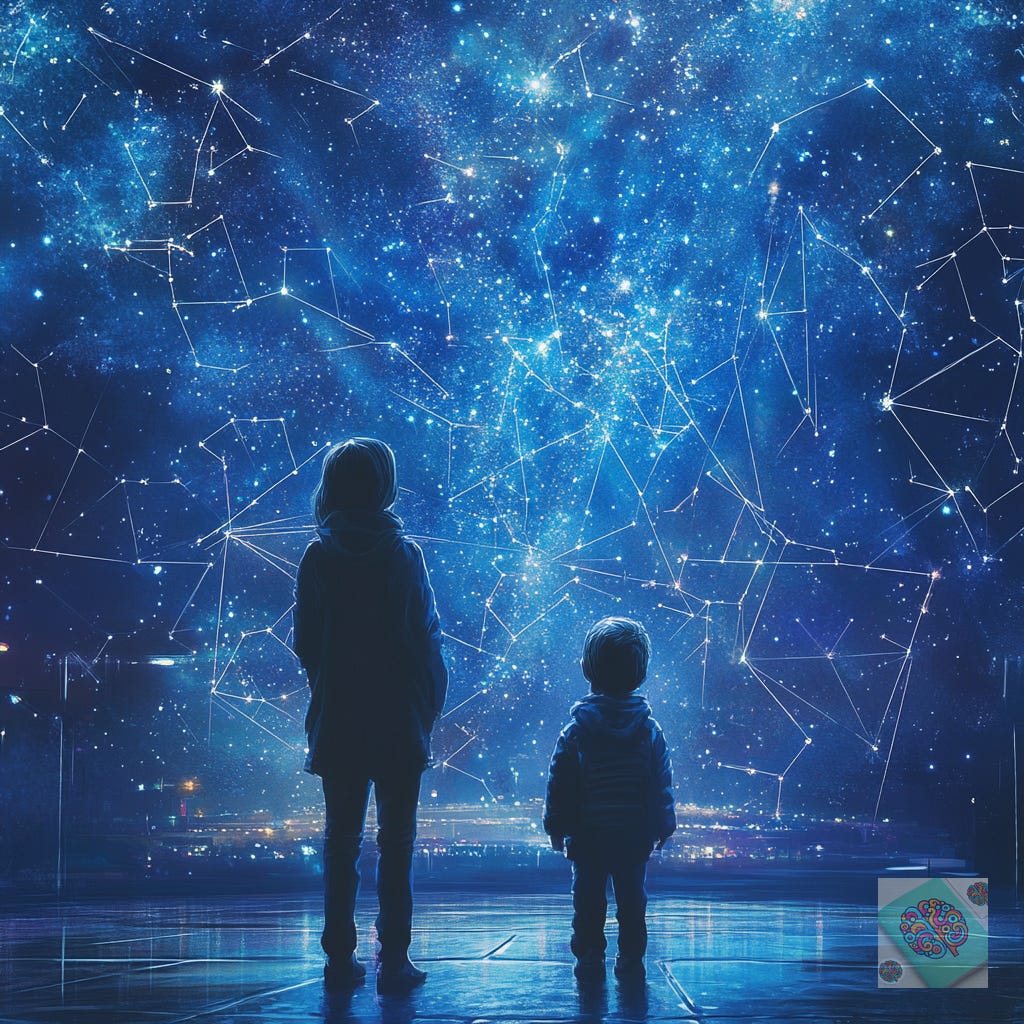Breaking the Myths About Adult Neurodivergence
Neurodivergent, Not Defective—Breaking Free From the Myths That Hold Us Back
The Misconceptions Holding Us Back
Neurodivergence in adults is deeply misunderstood. For years, I struggled with questions I couldn’t answer—until one moment changed everything. The realization hit me like a tidal wave, reshaping my understanding of myself and the world around me. This is my journey of discovery and the myths I had to break through to truly accept who I am.
A Moment of Clarity
When I first heard the words “Dad, you’re probably on the spectrum too” from my son’s doctor, it was like a mirror shattering in my brain. In that instant, every struggle, every misunderstanding, every moment of being called weird or feeling out of place suddenly made sense. I relived my entire life in a blink—every moment of being mocked for being different, the times I sat alone at lunch, the exhaustion of trying to fit in, and the unique ways I navigated relationships. Memories of awkward interactions, misunderstandings, and unspoken loneliness flooded back, but so did moments of joy—when I found people who accepted me just as I was.
That realization was both exhilarating and bittersweet. On one hand, I finally understood myself. I wasn’t some lone outlier; I was part of something bigger. On the other hand, I worried for my children, because I knew the burdens that could come with it. But they had something I never did: awareness. They had time—decades—to understand, accept, and navigate their neurospiciness in ways I never could at their age.
For adults discovering their neurospicy identity later in life, there are countless misconceptions that make self-acceptance an uphill battle. Here, I want to break down some of the biggest myths, backed by research, expert insights, and my own lived experiences.
Myth #1: “Adults with Neurodivergence Don’t Want Meaningful Relationships”
Reality: We build friendships differently, but we build them deeply.
One of the most harmful misconceptions is that neurospicy adults don’t seek or value deep relationships. In truth, we just connect in different ways.
A study by Levy and Perry (2011) found that while social communication styles vary among autistic adults, the desire for meaningful connection is just as present. Dr. Tony Attwood echoes this, explaining that many of us form deep, loyal relationships but might struggle with the traditional social cues that neurodifficult people take for granted.
For years, I tried to build lasting friendships, sometimes succeeding, often struggling. There was always a moment where I’d find myself thinking, Maybe I really am just better off alone. But then I met someone who was on my wavelength.
We “pebbled” each other for years—sharing interests, supporting one another instinctively, always reaching out in difficult moments. Unlike the traditional way neurodifficult people may build friendships through frequent socializing or direct emotional expression, our connection thrived on small, thoughtful gestures and an unspoken understanding that didn’t require constant validation. 'Pebbling' is a term often used to describe how neurospicy individuals show affection and build connections by sharing small meaningful things, whether it's recommending a favorite book, sending an interesting article, or simply checking in at the right time. The realization hit me: This person is my best friend.
It was terrifying to admit. Rejection Sensitive Dysphoria (RSD) loomed over me. Would they freak out? Would they ghost me like so many before?
I finally took the plunge: "You are my best friend. No pressure. And you can do hard things."
Seven breathless minutes passed before the response came: “Ditto.”
In that moment, my entire lens on relationships shifted. I could be loved. I could be accepted. I was worthy of friendship.
Myth #2: “Masking Means You’re Not That Neurodivergent”
Reality: Masking is exhausting and often comes at a cost.
Masking—suppressing neurospicy traits to fit into social norms—can be a survival strategy. But it’s not a sign that someone’s struggles aren’t real. Research in Neuropsychology Review (Sucksmith et al., 2011) highlights how many adults on the spectrum, especially those undiagnosed, mask extensively, leading to exhaustion, anxiety, and even burnout.
I learned this firsthand.
There was a time when I hung out with a group of friends who were party animals. I wanted to fit in, so I went along to clubs with them—even though I hated loud noises, cigarette smoke, and chaotic environments. I masked hard, mirroring social cues.
One night, a woman pulled me onto the dance floor without asking. I panicked. I had no idea what to do, so I just mimicked her movements, hoping to blend in. When she started touching me, I mirrored that too—only to be immediately shoved away and called something nasty.
It stung. I wasn’t trying to make anyone uncomfortable. I was just trying to survive socially. That moment reinforced my fear that no matter how hard I tried, I would always be one misstep away from being rejected. It made me hesitant in future social settings, second-guessing my actions and overanalyzing interactions in an attempt to avoid making the same mistake again. Over time, I learned to prioritize spaces where I could be myself rather than constantly feeling like I had to walk on eggshells.
Myth #3: “If You Didn’t Show Classic Signs in Childhood, You’re Not Neurodivergent”
Reality: Many of us masked so well that we went unnoticed for years.
Dr. Tony Attwood has long argued that autistic adults, especially women and those who internalize traits, can go undiagnosed because they learn to camouflage their behaviors. The same goes for ADHD—Dr. Russell Barkley notes that many adults who functioned "well enough" in childhood were simply overlooked.
This played out in my life, especially in friendships. One of my childhood best friends (let’s call him Ryan) was kind to me privately but cruel when others were around. He would tease me, mock my family for using Pine-Sol in the house, and make fun of my hand-me-down clothes.
Eventually, we moved in together. A year later, he told me his dad was selling the house, so I had to leave. I found out later that was a lie. I had simply been “too difficult” to live with, and instead of telling me, he made up a story.
That moment stayed with me. It shaped how I approached friendships moving forward, making me more cautious about who I let into my life. I learned to look for authenticity and mutual respect, rather than trying to force connections that ultimately drained me. Over time, I realized that true friendships should never require constant masking or compromise of one's core self. It wasn’t until my own diagnosis that I realized how often I had unknowingly exhausted myself trying to fit into friendships that were never truly safe for me. Once I understood this, I became more intentional about the relationships I pursued, focusing on those where I could be my authentic self without the constant need to mask or adapt. I learned to set boundaries, recognize when a friendship was draining rather than fulfilling, and prioritize connections that brought genuine support and understanding.
Final Myth: “Being Neurodivergent Is a Burden”
Reality: It’s a different way of experiencing the world, and it has immense strengths.
Looking back on everything I've learned—the struggles and triumphs, the moments of isolation and the connections I’ve built—I realize how much I wish I could have reassured my younger self. If I could talk to my younger self, I’d say:
"It’s okay to be different. The teasing and struggles will fade with time. You’re not a burden. You’re not unworthy of love. You are neurospicy, and your brain is wired to change the world. Find your people and never let them go. Accept them as they are, just as you want to be accepted. It gets better."
Conclusion: Rewriting the Narrative
The myths about adult neurospiciness are persistent, but they are just that—myths.
We want meaningful relationships.
We mask because we’ve learned to survive.
We struggled with undiagnosed traits, but that doesn’t make them less real.
We need more than just medication—we need support, structure, and community.
And above all, we are not broken. We are capable, valuable, and deserving of understanding. If you take nothing else from this, let it be that your experiences are real, and you are not alone. Share your story, seek your community, and embrace the strengths that make you uniquely you. We are wired differently—and that difference is what pushes humanity forward.
What Do You Think?
Does this resonate with you? Drop a comment or share this with someone who might need to hear it. Let’s challenge these myths together and create a space where all neurospicy individuals feel seen and valued.
Thanks for reading! Until next time, keep embracing your neurospiciness.
We’d love to hear your stories. What challenges have you faced? What strategies have worked for you? Let’s keep this conversation going and support each other on this journey. You can email us at askmcphee@gmail.com 📩 to share your thoughts and experiences.
Citations
Levy, S., & Perry, A. (2011). Outcomes in adolescents and adults with autism: A review of the literature. Research in Autism Spectrum Disorders, 5(4), 1271–1282.
https://doi.org/10.1016/j.rasd.2011.01.023Sucksmith, E., Roth, I., & Hoekstra, R. A. (2011). Autistic traits below the clinical threshold: Re-examining the broader autism phenotype in the 21st century. Neuropsychology Review, 21(4), 360–389.
https://doi.org/10.1007/s11065-011-9183-9Attwood, T. (2007). The Complete Guide to Asperger’s Syndrome. Jessica Kingsley Publishers.
https://amzn.to/3WWXwWu
(Note: this is an Amazon affiliate link that helps support our work here.)Barkley, R. A. (2013). Taking Charge of ADHD: The Complete Authoritative Guide for Parents (3rd ed.). Guilford Press.
https://amzn.to/3ELYFd5
(Note: this is an Amazon affiliate link that helps support our work here.)







